5G 技术概述以及如何利用MPS 产品优化基站 AAU 和 BBU

每月为您发送最具参考价值的行业文章
我们会保障您的隐私
概述
5G 常被人们称为一项突破性的蜂窝网络技术,它让人们生活中的一切变得更加简单,从机器人手术到视频通话,再到推动人工智能的不断发展。然而,除了它的速度更快,与之前的蜂窝技术迭代相比,5G的独特之处到底在哪里?
本文将对5G的概念和网络架构进行介绍,并探讨在更多领域应用 5G 可能带来的益处和挑战。文章还将介绍 MPS 解决方案如何帮助解决 5G 应用面临的一些挑战,例如电源问题。
5G是什么?
5G 是一项于2019 年发布的全球无线通信标准,它是继1G 至 4G之后的第五代蜂窝网络技术。在 5G 网络架构中,服务区域被划分为称为“蜂窝小区”的地理单元,每个服务区域都以基站为中心。基站负责处理无线设备(如手机)与网络之间的信号接收、处理和传输。
5G 无线设备与蜂窝基站(也称为节点)之间的通信是通过固定天线发送或接收无线电波来实现的。这些设备通过节点分配的特定频率进行通信。例如,当您携带手机移动时,手机会在节点之间无缝切换通信,以确保持续联网。如果信号减弱或完全中断,则说明手机不在节点的覆盖范围内,并且附近没有其他可用的节点。
5G是最新的标准,它比前几代速度更快、更高效;此外,它跨三个频段(低频段、中频段和高频段)运行,因此可为消费者提供更广泛的信号覆盖范围和更快的速度。
表 1 显示了五代蜂窝网络技术之间的主要区别。
表 1:蜂窝网络代际演进
| 代际 | 平均数据速率 (Mbps) | 应用 |
| 1G | 0.024 | 通过无线电话进行语音通话 |
| 2G | 0.1 | 提高了质量,短信 |
| 3G | 2 | 电子邮件和视频流、移动数据 |
| 4G | 30 | 社交媒体、高清流媒体、app |
| 5G | 60 至 1,000 | 高速互联网、人工智能网络、传感器 |
5G 网络架构
基站 是5G 网络的核心组件,它由两大组件构成:有源天线单元 (AAU) 和基带处理单元 (BBU)(见图 1)。
AAU 负责接收和发送无线电信号,实现无线设备与基站之间的通信。AAU包含两大组件:接收无线电频率的天线,以及将无线设备连接到无线网络的远端射频单元 (RRU)。
BBU 与RRU连接,负责控制数据流量并进行数据处理。BBU 又分为集中式单元 (CU) 和分布式单元 (DU)。CU 提供资源管理等高级功能,而 DU 则完成信号处理和调制等功能。
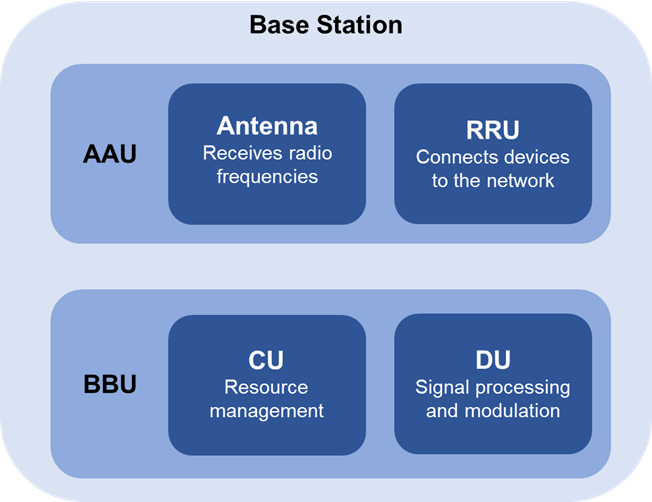
图1: 基站架构
以手机为例。当您尝试与朋友视频通话时,手机会向您所在小区内最近的基站发送信号。基站通过 AAU 的天线接收该信号,然后由AAU对信号进行处理并传输至卫星。卫星接收来自您最近基站的信号,然后向最靠近您朋友设备(例如智能手表)的基站发送一个新信号。当您朋友的设备收到该信号时,可以接听电话,然后即可开始通信。
5G可以带来什么益处?
与 4G 相比,5G 最大的优势是更快的下载和上传速度,这让用户几乎可以即时通信。更快下载和上传速度让在线连接和加入互联网讨论、发送文字及图片变得更加轻松。
此外,5G 延迟更低,它减少了数据在设备之间传输所需的时间。这意味着当您与朋友进行视频通话时,视频不会经常卡顿,您始终能看到他们的实时响应。增强的移动宽带还让人们能够观看更高清晰度的视频,并与虚拟现实互动。
而且,5G 更适合人口密集的地区,因为它支持同时连接,这对不断添加更多物联网 (IoT) 设备的智能家居至关重要,例如通过手机控制的视频门铃, 电子智能锁, 和智能恒温器等。
5G 不仅对消费者有益,对某些市场而言也是无价之宝。它推动了人工智能和机器学习的发展,足够快的速度让ChatGPT 等聊天机器人可以快速组织人们提出的问题,并提供连贯的答案。医疗领域也可以利用5G实现远程医疗,并为事故发生者和需要派遣救援服务的操作员之间提供可靠的通信网络。
据估计,5G 可以服务的行业还将继续拓展,并为人们提供更快、更可靠且更高质量的新技术。
5G面临的挑战
5G 面临的最大问题之一是其能耗效率较低。5G 基础设施需要密集的蜂窝和基站网络,由于需要在施工团队和监管部门之间进行协调,网络建设成本可能变得高昂,并且需要很长的开发时间。尽管 5G 的设计已经比前几代更节能,但它仍具有更复杂的架构和更多的站点。这导致总体能耗攀升,成本高企,最终还可能造成更多的环境问题,严重过它能够解决的问题。
5G 系统要求高功率来支持超快数据传输标准,这需要在环保性和高速度之间做出权衡。为确保 5G 不会损害环境,对变电站采用的硬件进行创新成为必要。只有小体积、高效率、散热快或能够优化上电序列的新一代技术才能充分发掘出 5G 骄人的传输速率。
5G 还面临一个障碍,即难以穿透建筑物和树木等障碍物。由于高频带的覆盖范围有限,严重的干扰会降低数据速度。这也使得 5G 不适合乡村地区,因为实施 5G 既不经济也不环保。5G不太可能覆盖人口稀少的地区,部分消费者也可能无法负担支持 5G 的终端。可用性的降低让所有终端都采用5G变得不太现实。
还有一点就是5G 可能引发的安全问题,因为它将如此多的设备连接在了一起,任何一个环节如果被网络攻击都可能导致安全隐患。例如,手机连接视频门铃,视频门铃又连至智能锁,而智能锁又连接到安防系统;网络黑客有可能攻击这些设备中的任何一个,并因其互操作性和连通性而对其他所有设备造成威胁。
5G (AAU)电源解决方案
集成了多级供电设备的AAU用于确保所有信号都能被接收、处理并传输。对于接收器和发射器来说,配备能够产生高输出电流 (IOUT) 和最优输出电压 (VOUT)的高性能电源非常重要。
中间总线转换器 (IBC)用于为 AAU 中的大部分电路供电。同步降压变换器MPQ8645可以确保接收器和发射器不会从IBC处接收到危险的高电压。MPQ8645为全集成式器件,具有可调 VOUT,可满足特定应用的需求。无论输入电压 (VIN) 或 VOUT如何,其开关频率 (fSW) 始终保持为大约 800kHz,从而能够在动态条件范围内实现高效率运行。
MPQ8645采用超小尺寸 TLGA-37 (5mmx6mm) 封装,简单易用,无需复杂的配置即可在系统内运行。其外部组件也极少,可轻松控制并调节,能够为注重小型化的应用提供完整的解决方案。
此外,MPQ8645 还是一款汽车级变换器,它能够在恶劣的环境下高效率运行,非常适合天气条件变幻莫测地区的基站。
为了进一步保护接收器和发射器,MPQ8645还提供过压保护 (OVP)、过流保护 (OCP) 和过温保护 (OTP),可防止 AAU 在次优甚至危险条件下运行。
图 2 展示了 MPQ8645 可配置在 AAU 中的最佳位置。
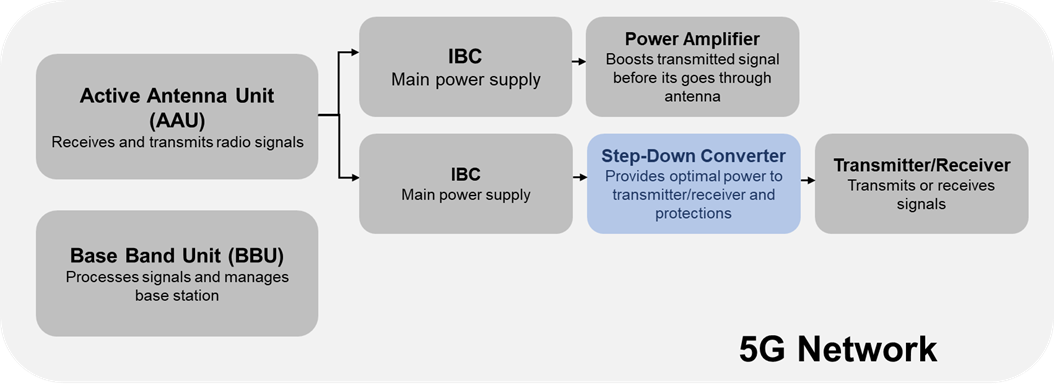
图2: AAU中的MPQ8645
5G (BBU)电源解决方案
MP87190 是一款集成驱动器和 MOSFET (DrMOS) 的电源解决方案。它采用 Quiet SwitcherTM 技术 (QSTTM),可在单片架构中通过专有电路设计来抑制电压振铃。该器件还可以降低 EMI 辐射并降低PCB 布局敏感性,从而提高设备的可靠性。
作为一款功能强大的 DrMOS,MP87190采用超小尺寸的 TLGA-41 (5mmx6mm) 封装。它可与三态脉宽调制 (PWM) 信号控制器配合使用,从而实现更大的灵活性(见图 4)。该器件具有高达 90A 的 IOUT,可确保 FPGA 和 ASIC 获得正常工作所需的电量。此外,它可在 3V 至 16V 的宽 VIN范围内工作,因此适用范围广泛。MP87190还具有高效率以及 -40°C 至 +105°C 的宽工作温度范围,非常适合户外 5G 环境。
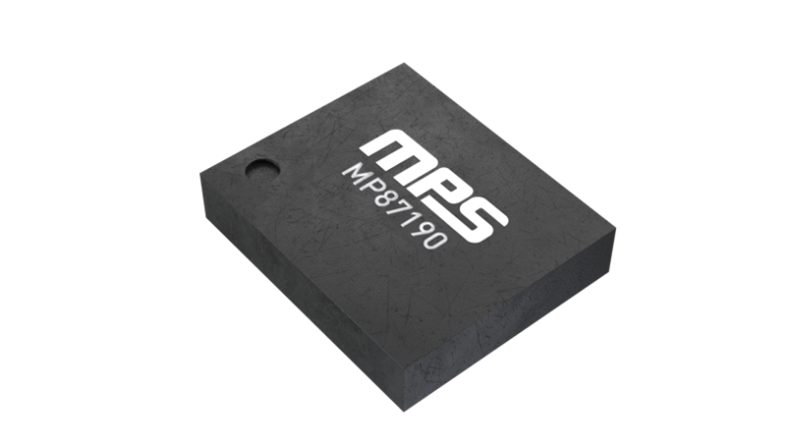
图3: MP87190封装
Intelli-PhasesTM电源解决方案可实现 FPGA 和 ASIC 的供电。其高效率和小尺寸使其成为这类空间受限应用的理想选择,精确的电流采样和温度采样可优化电源管理,确保系统不会在过流 (OC) 或过温 (OT) 条件下运行。OC 和 OT 条件都可能导致过热,不仅可能损坏 FPGA 和 ASIC,还可能损坏应用中的相邻组件。
图 4 对上述部件及其功能做了总结,并标明了 Intelli-PhaseTM 在应用中的位置
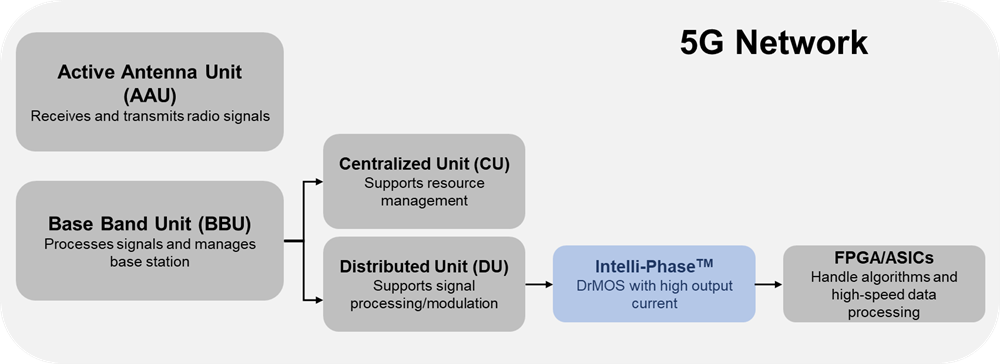
图4: 5G 应用中的 Intelli-PhasesTM解决方案
结语
5G 已经并将持续改变人们连接设备、连接全球其他设备的方式。它极具创新,但在广泛采用和效率方面仍然面临挑战。
本文概述了 5G 基础知识,并介绍了两款 MPS 器件 MPQ8645 和 MP87190 用于改进 5G 基站内的 AAU 或 BBU 架构 MPS还提供可用于其他应用的其他产品选择,请浏览MPS的 高功率变换器 和 Intelli-PhaseTM 器件产品组合,以找到满足您设计需求的产品。
_______________________
感兴趣吗? 点击订阅,我们将每月为您发送最具价值的资讯!
技术论坛
 Latest activity 12 months ago
Latest activity 12 months ago
 11 回复
11 回复
 Latest activity 10 months ago
Latest activity 10 months ago
 24 回复
24 回复
 Latest activity 10 months ago
Latest activity 10 months ago
 17 回复
17 回复





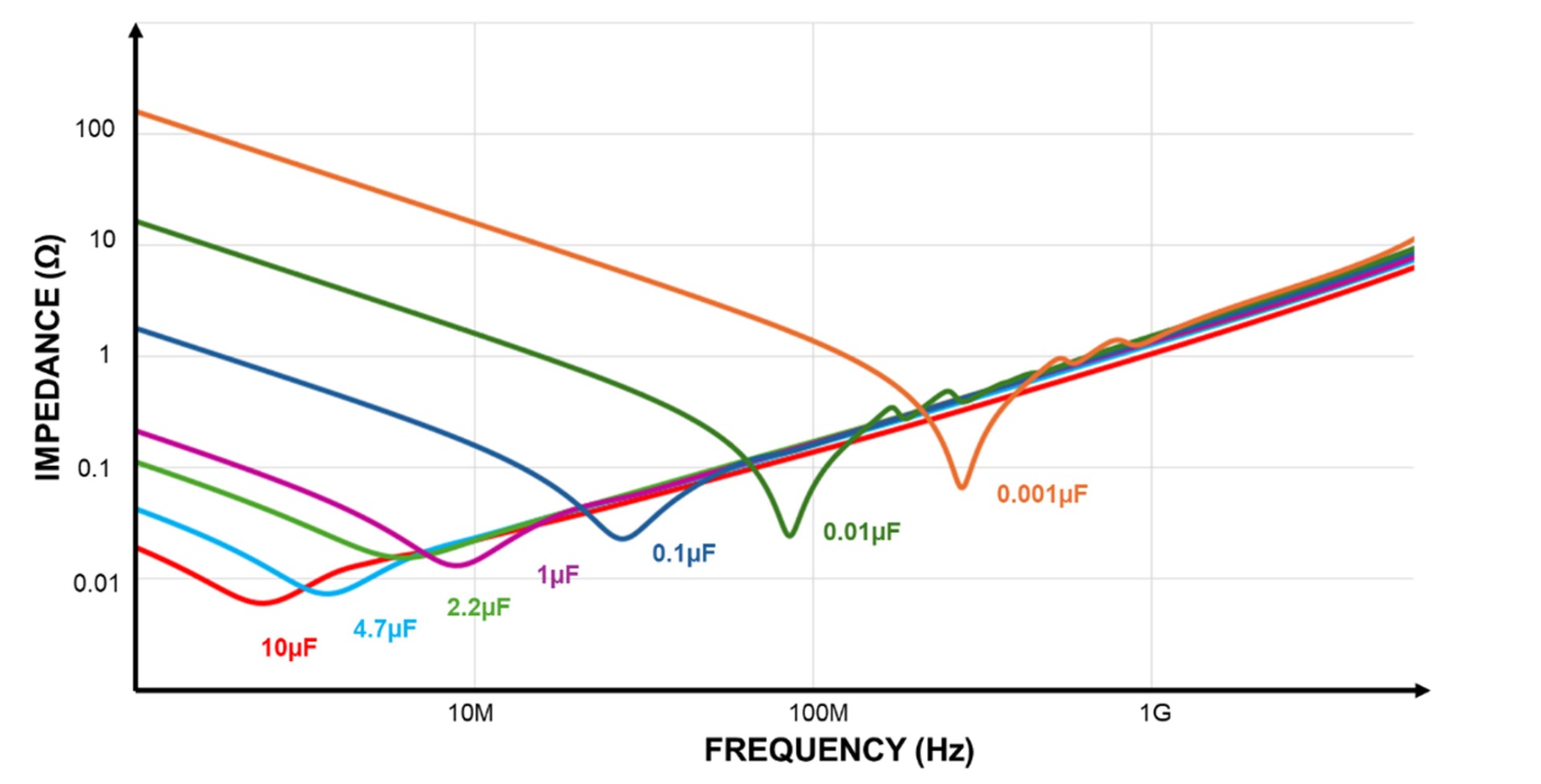
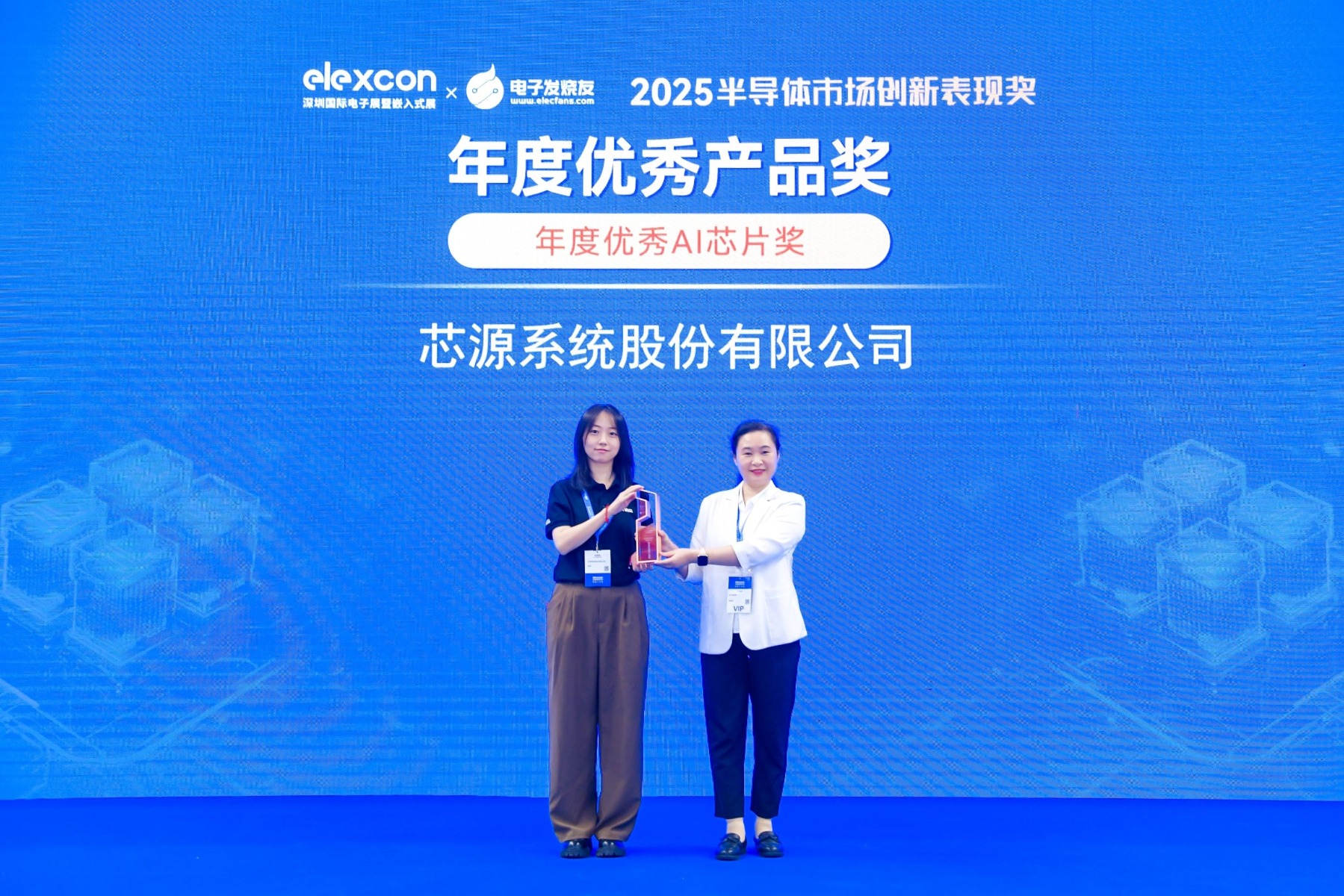

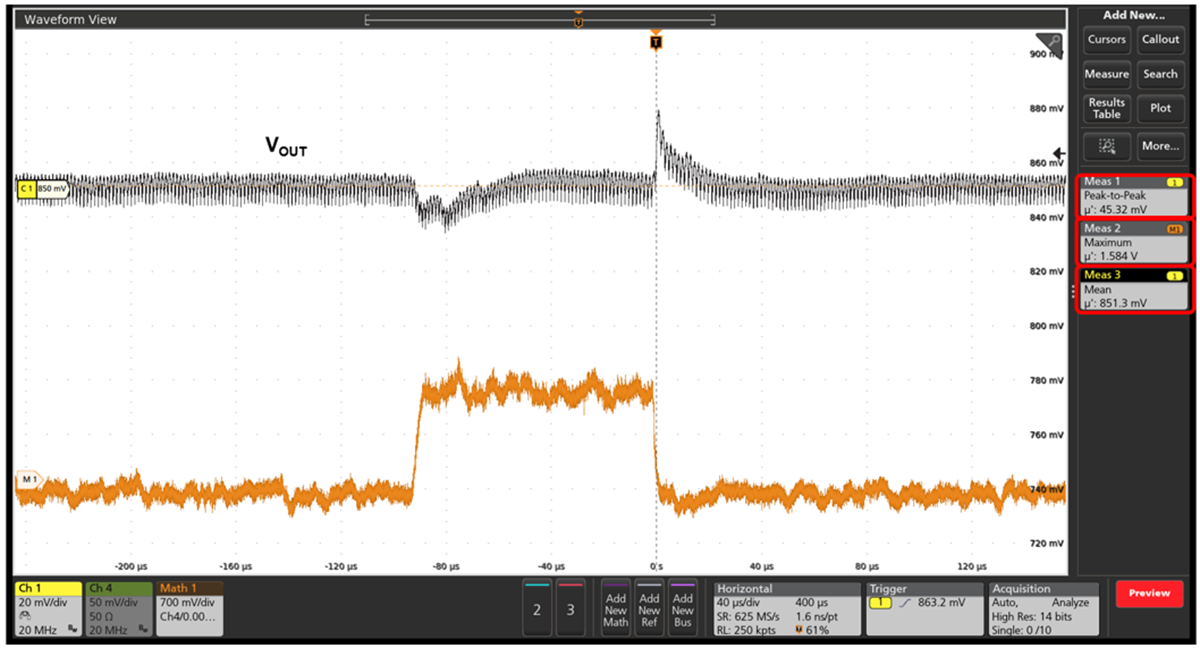





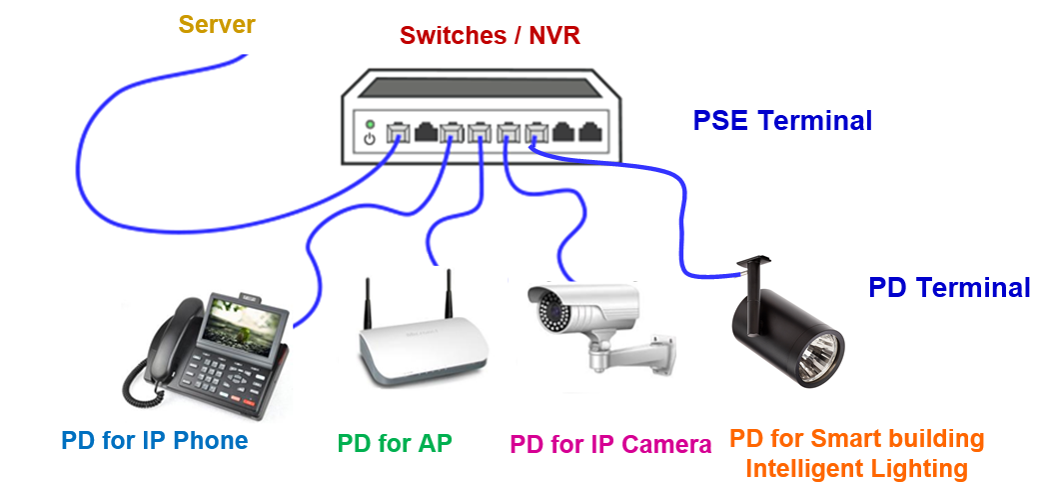

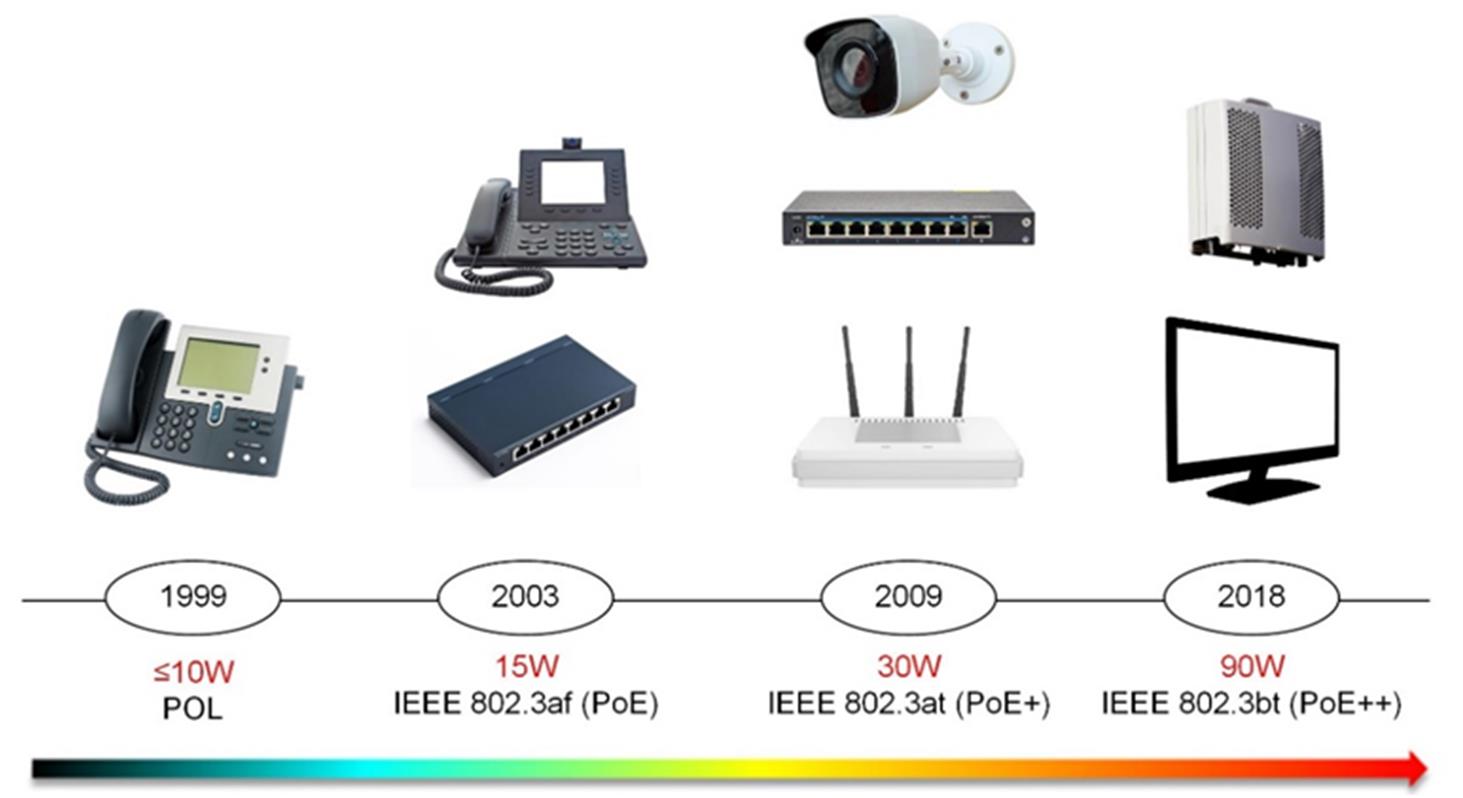
直接登录
创建新帐号